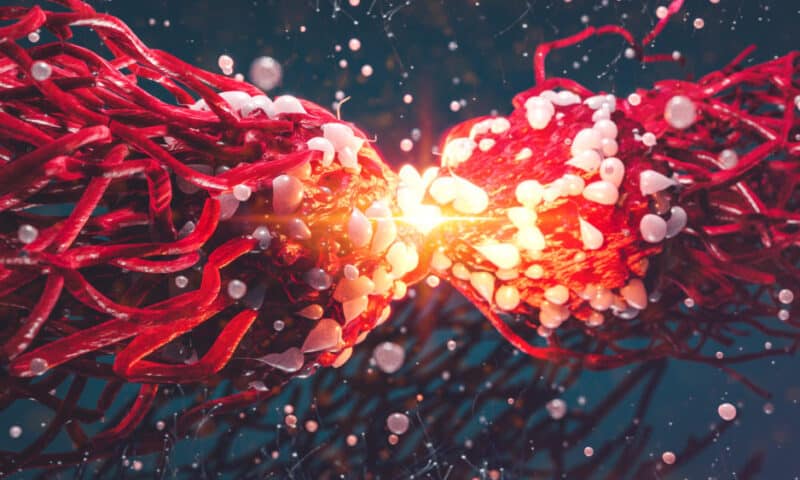The word “chromothripsis” literally means “chromosome shattering.” Chromosomes that undergo chromothripsis first fragment into many pieces and then get stitched back together in a random order by DNA repair processes, most likely non-homologous end joining. Now, researchers at the University of California San Diego School of Medicine and the UC San Diego branch of the Ludwig Institute for Cancer Research, report how chromothripsis ultimately promotes cancer cell growth.
Their findings, “Chromothripsis drives the evolution of gene amplification in cancer,” are published in the journal Nature.
Chromothripsis is a mutational process by which up to thousands of clustered chromosomal rearrangements occur in a single event in localized and confined genomic regions in one or a few chromosomes, and is known to be involved in both cancer and congenital diseases.
“These rearrangements can occur in a single step,” explained Ofer Shoshani, PhD, a postdoctoral fellow in the lab of Don Cleveland, PhD, professor of medicine, neurosciences, and cellular and molecular medicine at UC San Diego School of Medicine.
“During chromothripsis, a chromosome in a cell is shattered into many pieces, hundreds in some cases, followed by reassembly in a shuffled order. Some pieces get lost while others persist as extra-chromosomal DNA (ecDNA). Some of these ecDNA elements promote cancer cell growth and form minute-sized chromosomes called ‘double minutes.’”
Previous research done by the team found that up to half of all cancer cells in many types of cancers contain ecDNA carrying cancer-promoting genes. In the current study, the researchers employed direct visualization of chromosome structure to identify the steps in gene amplification and the mechanism underlying resistance to methotrexate.
The team sequenced entire genomes of cells developing drug resistance, revealing that chromosome shattering prompts the formation of ecDNA-carrying genes that confer anticancer therapy resistance. The researchers also observed how chromothripsis drives ecDNA formation after gene amplification inside a chromosome.
The researchers’ findings demonstrate chromothripsis as a primary driver that accelerates genomic DNA rearrangement and amplification into ecDNA and enables rapid acquisition of tolerance to altered growth conditions.
“Chromothripsis converts intra-chromosomal amplifications (internal) into extra-chromosomal (external) amplifications and that amplified ecDNA can then reintegrate into chromosomal locations in response to DNA damage from chemotherapy or radiotherapy,” said Shoshani. “The new work highlights the role of chromothripsis at all critical stages in the life cycle of amplified DNA in cancer cells, explaining how cancer cells can become more aggressive or drug-resistant.”
“Our identifications of repetitive DNA shattering as a driver of anticancer drug resistance and of DNA repair pathways necessary for reassembling the shattered chromosomal pieces has enabled rational design of combination drug therapies to prevent development of drug resistance in cancer patients, thereby improving their outcome,” noted Cleveland.

